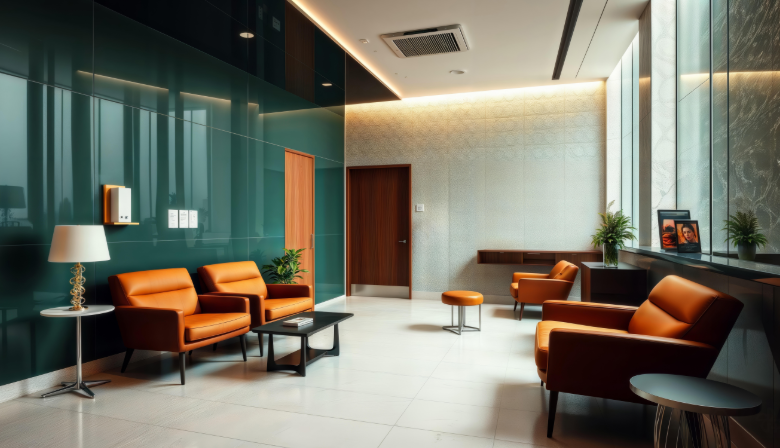Design Inspiration: Creating Inviting Spaces with Waiting Room Furniture

Whether it’s a restaurant, medical office, school, or corporate lobby, the waiting area sets the tone for the entire visitor experience. However, not many people like the idea of waiting, me included. Hence, it is important to make waiting experience in your organization more enjoyable (or at least bearable) with well-designed furniture.
Cohesive Design: Building Trust at First Glance
Great waiting room furniture begins with a cohesive visual theme. Furniture that complements the architecture, color palette, and brand identity helps create a sense of professionalism and intentionality. And, matching seating, consistent materials (like wood, metal, or fabric), and a balance of form and function is an indication that every detail has been considered.
For example, a pediatric clinic might benefit from soft colors, rounded edges, and playful yet calming designs, while a law office might lean toward sophisticated tones, leather finishes, and clean lines. A design that reflects your brand not only reinforces identity but also builds trust and comfort in clients from the moment they walk in.
Comfort is King: Make the Wait Worthwhile
While people might not remember a chair’s style, they’ll most likely remember its comfortability. That’s why comfort should be a non-negotiable element when it comes to choosing furniture for your waiting area. Ergonomic seating, soft yet supportive cushions, and armrests help make wait times feel less burdensome. Incorporating a mix of seating types, including lounge chairs, benches, and sofas, caters to various visitor needs.
Don’t forget about climate comfort either. Soft, breathable fabrics, proper spacing, and even furniture placement near natural light sources can significantly affect how welcoming the space feels.
Power Up: Integrated Charging Stations
Sure, a lack of power outlets can be a source of stress in an increasingly digital world. Adding built-in charging stations, whether through USB ports in chairs or integrated power hubs in tables, offers a highly appreciated amenity.
Visitors can charge phones, tablets, or laptops, turning idle time into productive or relaxed time. For clinics or offices with longer wait times, this small touch greatly enhances the user experience and reflects a thoughtful, client-focused approach.
Privacy Booths: Balancing Openness with Seclusion
While open layouts promote a sense of space, not every visitor wants to feel exposed while waiting. Integrating privacy booths or semi-enclosed seating options is a growing trend, particularly in healthcare and professional service environments.
Privacy pods or high-backed chairs can create quiet zones for phone calls, sensitive conversations, or simply personal downtime. These features are especially appreciated in areas where confidentiality or reduced noise levels are essential. These may include counseling centers and financial institutions.
See also: Ownership Structure: Understanding Business Hierarchy & Stakeholder Control
Modularity/Versatility: Adapting to Every Need
Spaces and users need to constantly evolve, and modular furniture offers the flexibility to keep up. The furniture can be rearranged to accommodate large families, small groups, or individual users, making the space feel more responsive and less rigid.
Some modular systems include curved or angled pieces, ottomans, and movable tables, allowing for endless configurations. This adaptability is ideal for multipurpose waiting areas or spaces that occasionally host events, seminars, or temporary setups. Stackable chairs and nesting tables also add value, allowing staff to reconfigure rooms quickly and efficiently without compromising style or comfort.
The Finishing Touches
An inviting waiting room doesn’t rely on furniture alone; the extras also elevate the experience. Side tables for personal items, waste bins, greenery, art, and calming lighting work together with furniture to create a holistic atmosphere.
Consider including accessible seating options for seniors or people with mobility challenges. Kid-friendly furniture, such as activity tables or low chairs, can also reduce stress for parents in family-oriented spaces.





